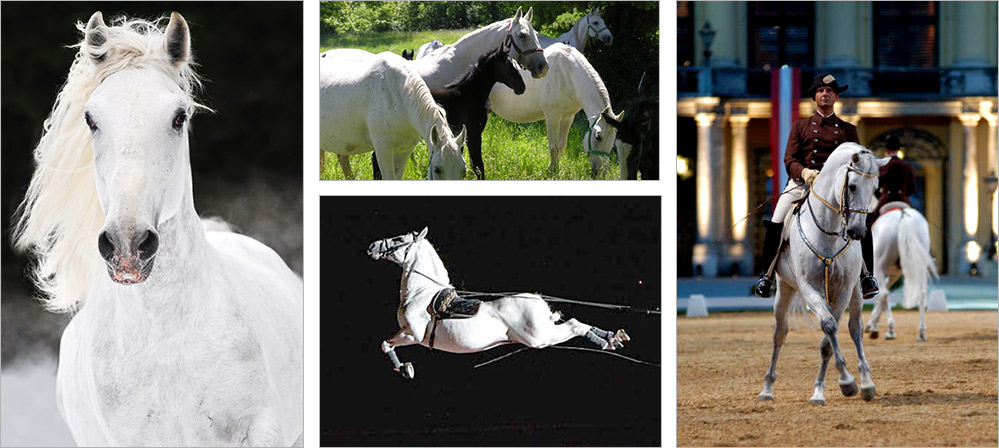
The Lipizzan Horse
The Lipizzan or Lipizzaner is a breed of horse closely associated with the Spanish Riding School of Vienna, Austria, where they demonstrate the haute école or “high school” movements of classical dressage, including the highly controlled, stylized jumps and other movements known as the “airs above the ground.” The Lipizzan breed dates back to the 16th century, when it was developed with the support of the Habsburg nobility. The breed takes its name from one of the earliest stud farms established, located near the Karst Plateau village of Lipica (spelled “Lipizza” in Italian), in modern-day Slovenia. The name of the village itself derives from the Slovenian word lipa, meaning “linden tree.”
Lipizzans are genetically a type of grey. Born dark, black-brown, brown, or mouse-grey, Lipizzans gradually lighten until the white coat for which they are noted is produced somewhere between the ages of 6 and 10. The white hair coat has become dominant in the breed, and only now and then is a black or brown adult produced. As late as two hundred years ago, black, browns, chestnuts, duns, piebalds, and skewbalds were found in the adult herd. Noted for his sturdy body and proud carriage, the Lipizzan’ head is remarkable for its large appealing eyes and small alert ears. The body presents a picture of strength with a crested neck, powerful shoulders, muscular hind quarters, and strong legs with well-defined tendons and joints. Not an exceedingly tall horse, the Lipizzan averages between 14.2 to 15.2 hands.
Information found at www.lipizzan.org and Wikipedia

